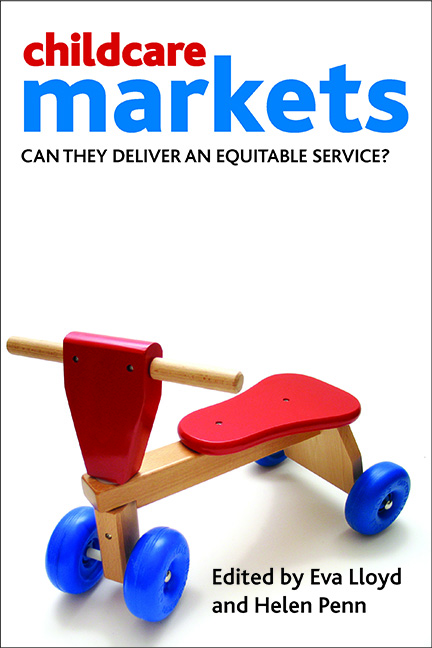nine - Canadian ECEC labour shortages: big, costly and solvable
Published online by Cambridge University Press: 01 September 2022
Summary
Introduction
Canada's early childhood education and care (ECEC) sector is primarily under the jurisdiction of the provinces and territories. Each jurisdiction has its own distinct set of regulations, programmes and policies. These differences result in a diverse mix of employment settings, training requirements and availability of regulated childcare places. Despite the myriad of approaches there are a number of striking similarities in the ECEC labour market outcomes throughout Canada. The sector faces low pay, high staff turnover and persistent workforce shortages. ECEC workforce shortages are extremely costly given the short- and long-term benefits delivered by quality ECEC. The dynamics of Canada's ECEC labour market are unique compared with other nations. Parents are price sensitive, labour supply is extremely responsive to wage increases and governments regularly short-circuit labour market outcomes. Expansion of services in this sector often leads to a lessening of quality as more inexperienced staff are taken on. This chapter illustrates the magnitude of workforce shortages in the Canadian ECEC sector and what can be done to end Canada’s recruitment and retention crisis.
The Canadian context
In Canada almost all ECEC services are under the jurisdiction of the provinces/territories. Each province/territory has a unique situation with distinct approaches to regulation, funding and policy. Provincial/territorial childcare regulations provide a baseline of health and safety standards (Doherty et al, 2003; OECD, 2004). There are differences in the types of service that are regulated and the requirements across provinces/territories, but there are a number of common features. All provinces and territories regulate childcare centres for children younger than school age and family childcare homes, though depending on the province/territory nursery schools/preschools, school-age childcare programmes and Aboriginal Head Start may or may not be regulated under the childcare legislation. Each province/territory regulates the maximum number of children that may be cared for in an unregulated family childcare home. This section relies on information provided by Doherty et al (2003) and OECD (2004). See these reports for a more thorough discussion of the Canadian situation.
There is a diverse set of regulations for childcare centres across provinces/territories according to Child Care Resource and Research Unit data (Beach et al, 2009) For example, in 2008:
• Staff–child ratios for infants in centres ranged from 1:3 in seven provinces/territories to 1:5 in Québec.
- Type
- Chapter
- Information
- Childcare MarketsCan They Deliver an Equitable Service?, pp. 153 - 172Publisher: Bristol University PressPrint publication year: 2012



